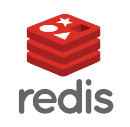AI: writing an MCP server for VictoriaLogs
22 May 2025In the previous article, we figured out what an MCP is in general, and created a basic MCP server that was connected to Windsurf – see AI: What is the MCP? Now, let’s try to create something more useful, for example, an MCP server that will connect to VictoriaLogs and receive some data. In fact,… Read More »






